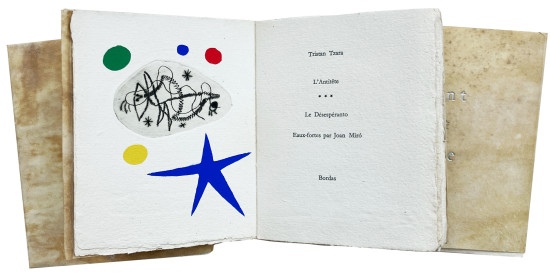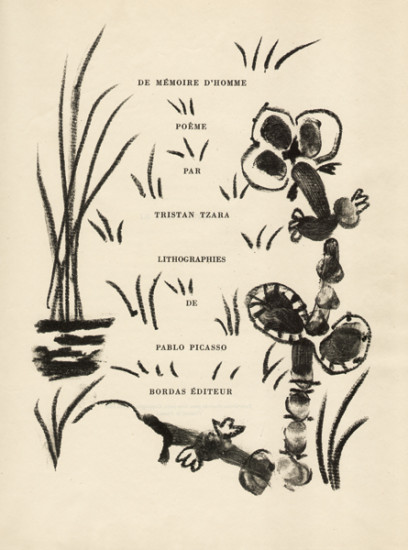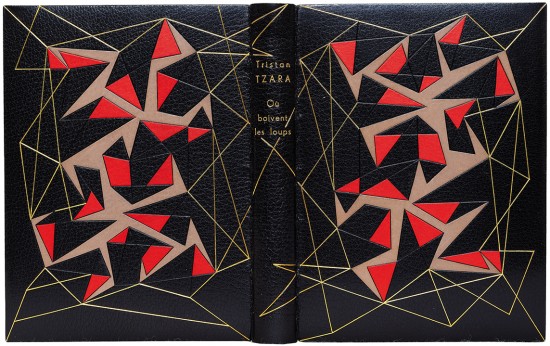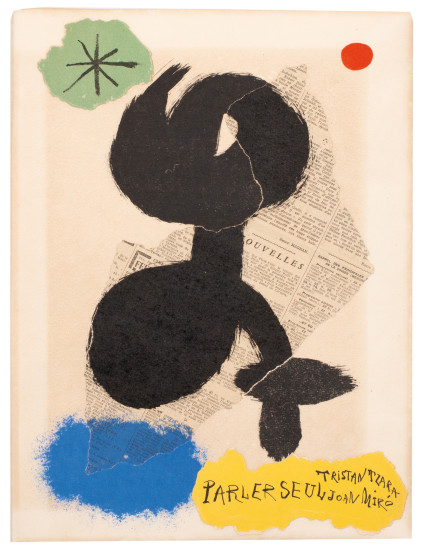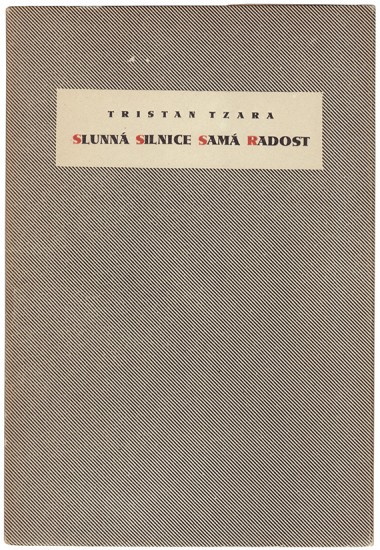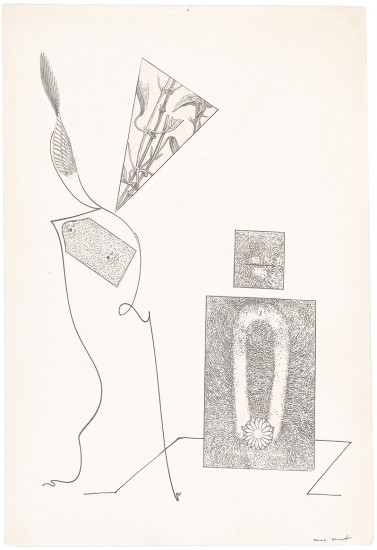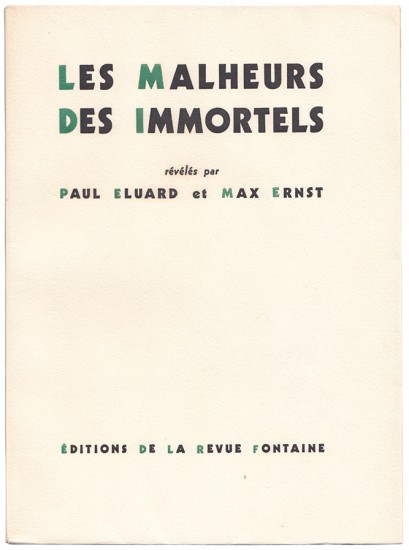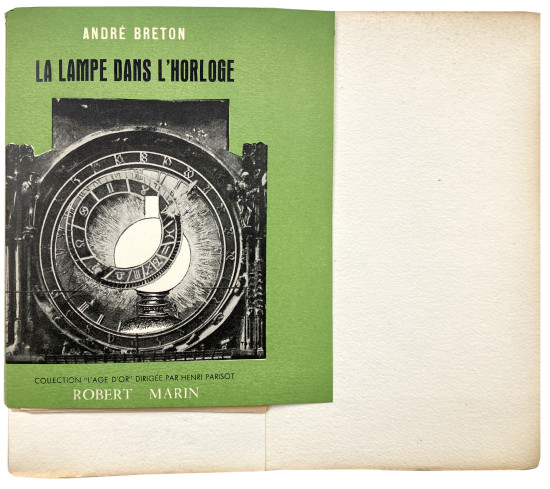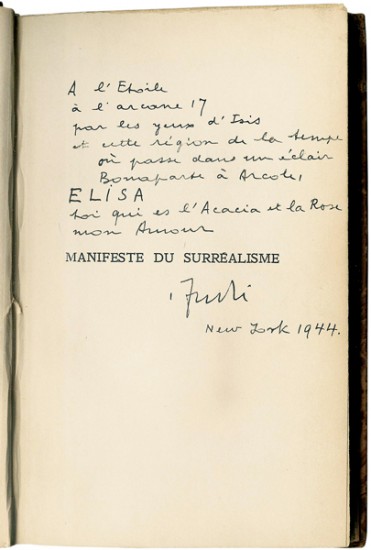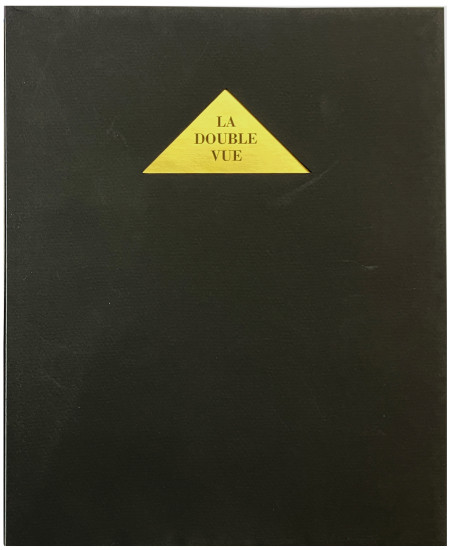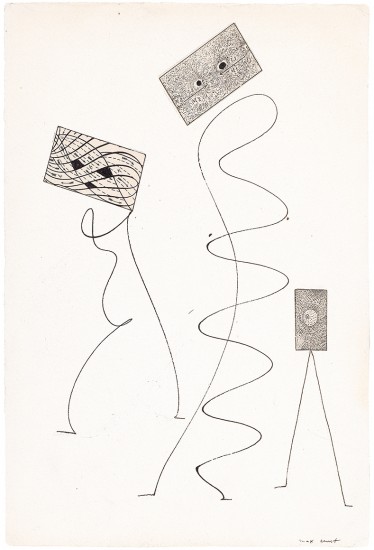L'Antitête - Monsieur AA l'Antiphilosophe. Eaux-fortes par Max Ernst - Minuits pour Géants. Eaux-fortes par Yves Tanguy - Le Désespéranto. Eaux-fortes par Joan Miro
Ernst, Max, Yves Tanguy & Joan Miro. Tzara, Tristan
Paris. Bordas Editeur. 1949
An excellent copy, completely unsophisticated as issued, of the second edition - the first in this form and with these illustrations - of Tristan Tzara's triple anthology of works.
From the edition limited to 200 copies, with this one of 169 copies on Auvergne with each volume signed by Tzara and the relevant artist in the relevant volume.
'By reading L'Antitête, which brings together, in book form, three anthologies written between 1916 and 1932, one can follow the development of Tzara. 'Monsieur AA l'Antiphilosophe' consists of texts written in the Dadaist manner. Tzara has dropped the consonants of 'Dada' and now one finds M. AA attacking not only the metaphysical systems intending to explain everything from A to Z, but also language itself ... The second part of L'Antitête, 'Minuits pour Géants', makes the transition between Dadaist destruction and the free inspiration of Surrealism. In the third part, Tzara proposes a new language, 'Le Désésperanto', which would be capable of expressing the automatism of thought which reveals the subconscious in all its forms; now anxiety, even despair, characterize the collective images of the unconscious.' (Cramer, Picasso Illustrated Books, pg. 66, discussing the first edition of 1933).
[Berggruen 33; Spies-Leppien 27/F (Ernst); Wittrock 17, A - C (Tanguy); Wember XII (Miró); see Cramer 20].
From the edition limited to 200 copies, with this one of 169 copies on Auvergne with each volume signed by Tzara and the relevant artist in the relevant volume.
'By reading L'Antitête, which brings together, in book form, three anthologies written between 1916 and 1932, one can follow the development of Tzara. 'Monsieur AA l'Antiphilosophe' consists of texts written in the Dadaist manner. Tzara has dropped the consonants of 'Dada' and now one finds M. AA attacking not only the metaphysical systems intending to explain everything from A to Z, but also language itself ... The second part of L'Antitête, 'Minuits pour Géants', makes the transition between Dadaist destruction and the free inspiration of Surrealism. In the third part, Tzara proposes a new language, 'Le Désésperanto', which would be capable of expressing the automatism of thought which reveals the subconscious in all its forms; now anxiety, even despair, characterize the collective images of the unconscious.' (Cramer, Picasso Illustrated Books, pg. 66, discussing the first edition of 1933).
[Berggruen 33; Spies-Leppien 27/F (Ernst); Wittrock 17, A - C (Tanguy); Wember XII (Miró); see Cramer 20].
[86 leaves; 52 leaves; 70 leaves; pp. 172, (i); 103, (i); 137, (i), (i)]. 3 vols. 12mo. (142 x 118 mm). Half-titles with justifications verso, titles with copyright verso, Tzara's texts and the following illustration: 8 original colour etchings by Max Ernst for vol. I (Monsieur AA, l'Antiphilosophe), 7 original colour etchings with aquatint by Yves Tanguy for vol. II (Minuit pour Géants), 8 original colour etchings with additional pochoir by Joan Miró for vol. III (Le Désespéranto), all printed by Lacourière, final leaves to each vol. with 'Table', final leaf to final vol. with achevé d'imprimer. Stitched as issued in original publisher's printed paper wrappers with Yapp edges, title to spine and contributors to each vol. to front cover in black, additional vellum jacket with title to front cover and vol. number to spine for each vol. in argent, black card board slipcase.
#48553
